Learning What Flowers Grow Well in Ohio
Explore the dynamic world of Ohio gardening, where the state’s varied climate nurtures a thriving diversity of colorful annuals, robust perennials, and enchanting native wildflowers
Ohio’s diverse climate offers a unique canvas for gardening enthusiasts, ranging from beginners to seasoned green thumbs. The state falls predominantly within USDA Plant Hardiness Zone 6, characterized by its cold winters and warm, humid summers. This distinct seasonal variation creates an optimal environment for various plant species. Gardeners in Ohio can experiment with everything from the vibrant flashes of color provided by annuals to the enduring presence of robust perennials and the natural beauty of native wildflowers. Each plant type brings benefits, allowing for dynamic and adaptable garden designs that can thrive across the changing seasons.
Key Highlights
- USDA Zone 6: Understanding the implications for planting and growing in Ohio’s specific climate.
- Seasonal Variety: Leverage Ohio’s cold winters and warm summers for year-round gardening success.
- Plant Diversity: Best practices for growing annuals, perennials, and native wildflowers in Ohio gardens.
The flexibility of Ohio’s climate means that gardeners can plan and plant a garden that blooms sequentially throughout the year. Whether you’re looking to create a stunning visual display or cultivate a functional space for pollinators, Ohio’s gardens can accommodate a variety of gardening goals. With careful planning and understanding of the local climate, Ohio gardeners can achieve lush, vibrant gardens that are as sustainable as beautiful.
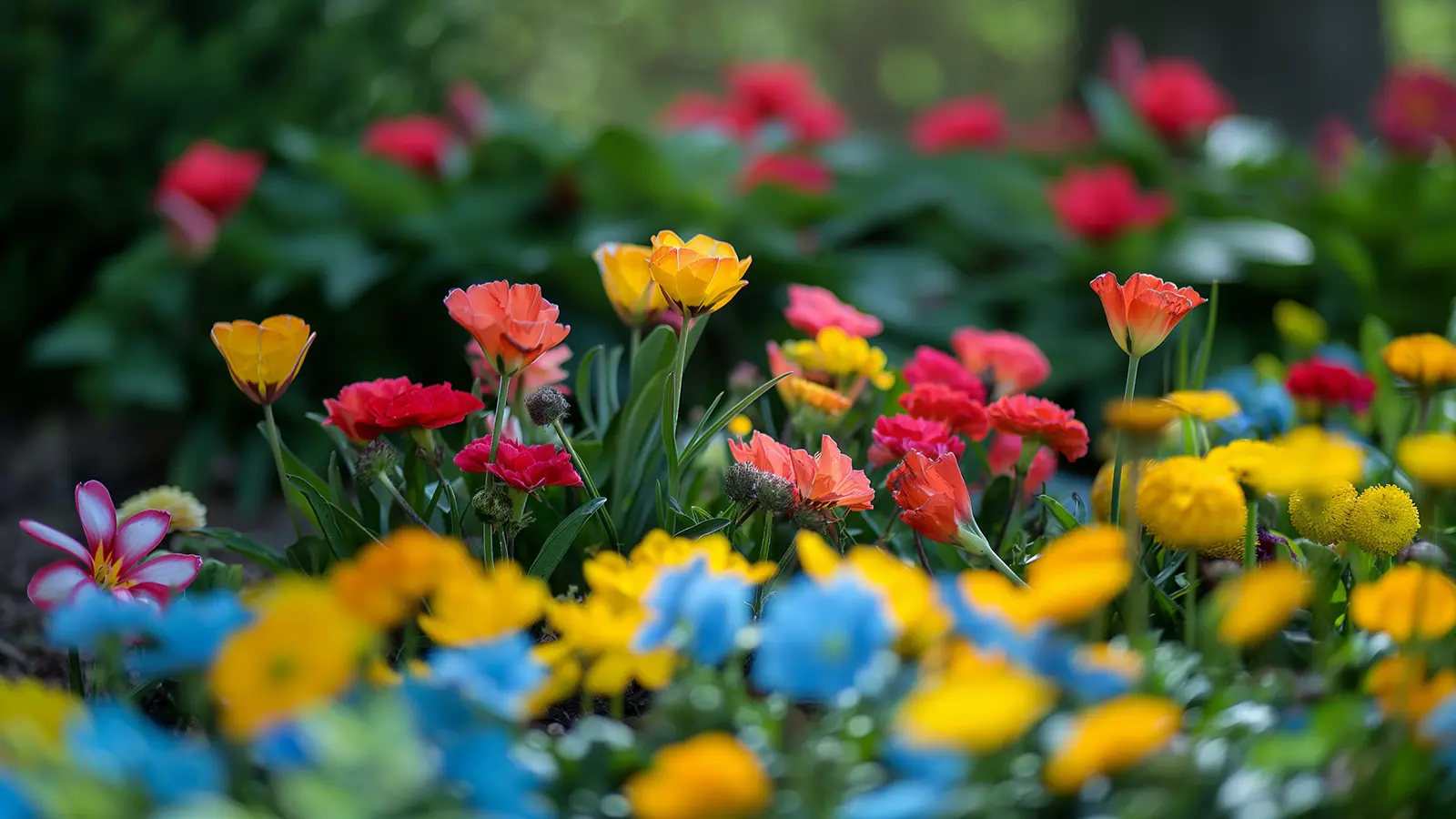
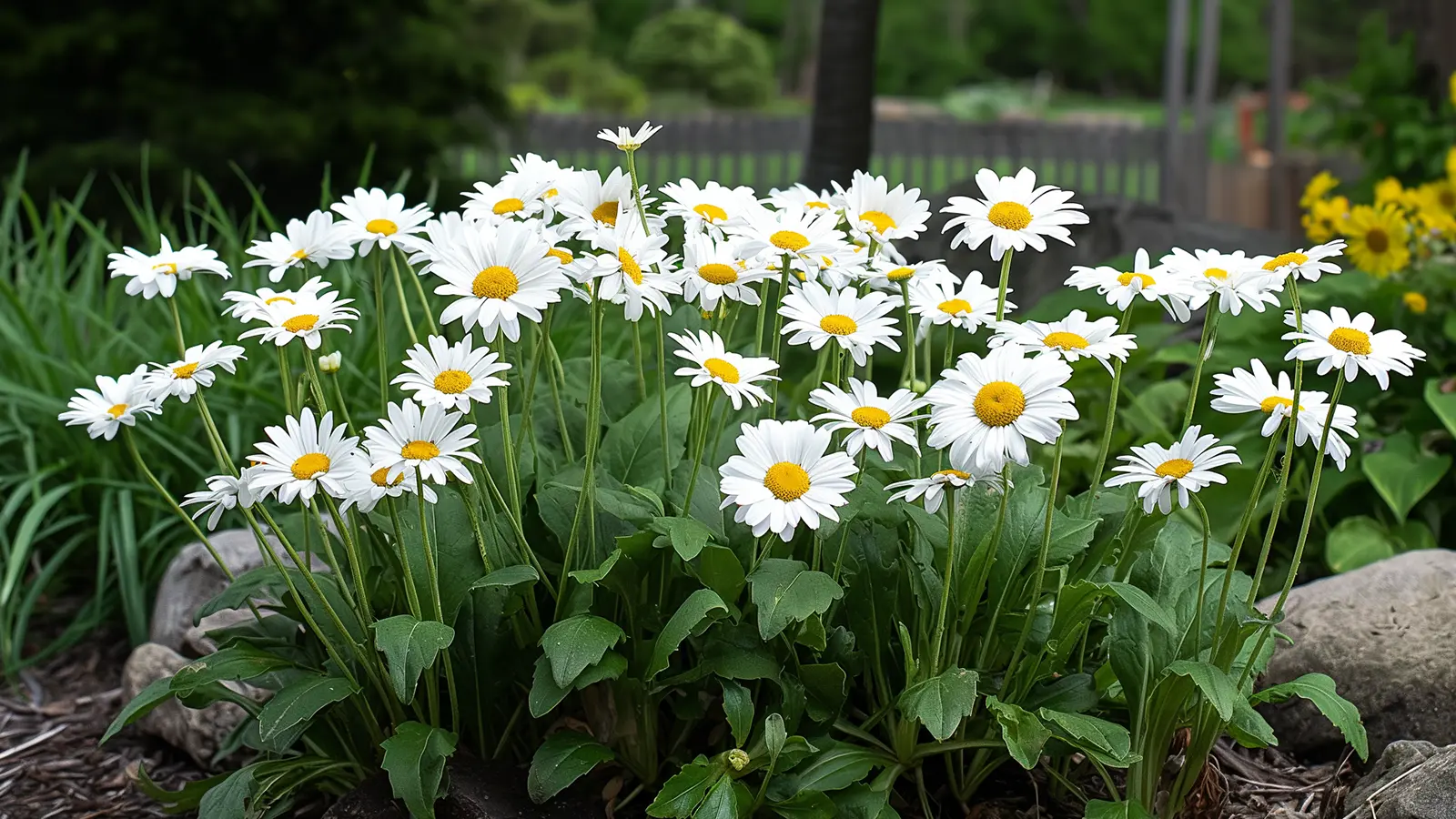
Understanding Ohio and Plant Hardiness Zones
Understanding plant hardiness zones is essential for gardeners in Ohio, as it provides a guideline for selecting plants that can thrive in local climate conditions. Hardiness zones, defined by the USDA, categorize regions based on their minimum winter temperatures, which in Ohio’s Zone 6 range from -10 to 0 degrees Fahrenheit. This classification guides gardeners toward plants that can endure the region’s potentially harsh winter conditions and prosper during warm, humid summers. By selecting perennials, shrubs, and trees rated for Zone 6 or colder, gardeners ensure these plants will withstand the cold and return year after year, making hardiness knowledge crucial for successful planting and garden sustainability.
Ohio’s rich soil and distinctive seasonal changes also influence plant care and selection, allowing various plant species to be cultivated. While tropical plants may flourish during the summer, they often fail to survive the winter unless adequately protected or moved indoors. In contrast, many native plants and well-adapted non-natives that align with Zone 6 requirements can survive outdoors year-round without special protection, making them invaluable for local biodiversity and reducing maintenance needs.
For Ohio gardeners, creating microclimates within their gardens can sometimes extend the variety of plants that can be grown by providing shelter and insulation. Techniques such as strategic placement and mulching can help sensitive plants survive outside their usual hardiness zone. However, the backbone of any successful Ohio garden should consist of plants well-suited to Zone 6 to ensure a resilient and flourishing garden ecosystem. Understanding and applying the principles of plant hardiness zones is fundamental for cultivating a vibrant and sustainable garden that bursts into life each spring and withstands the winter months.
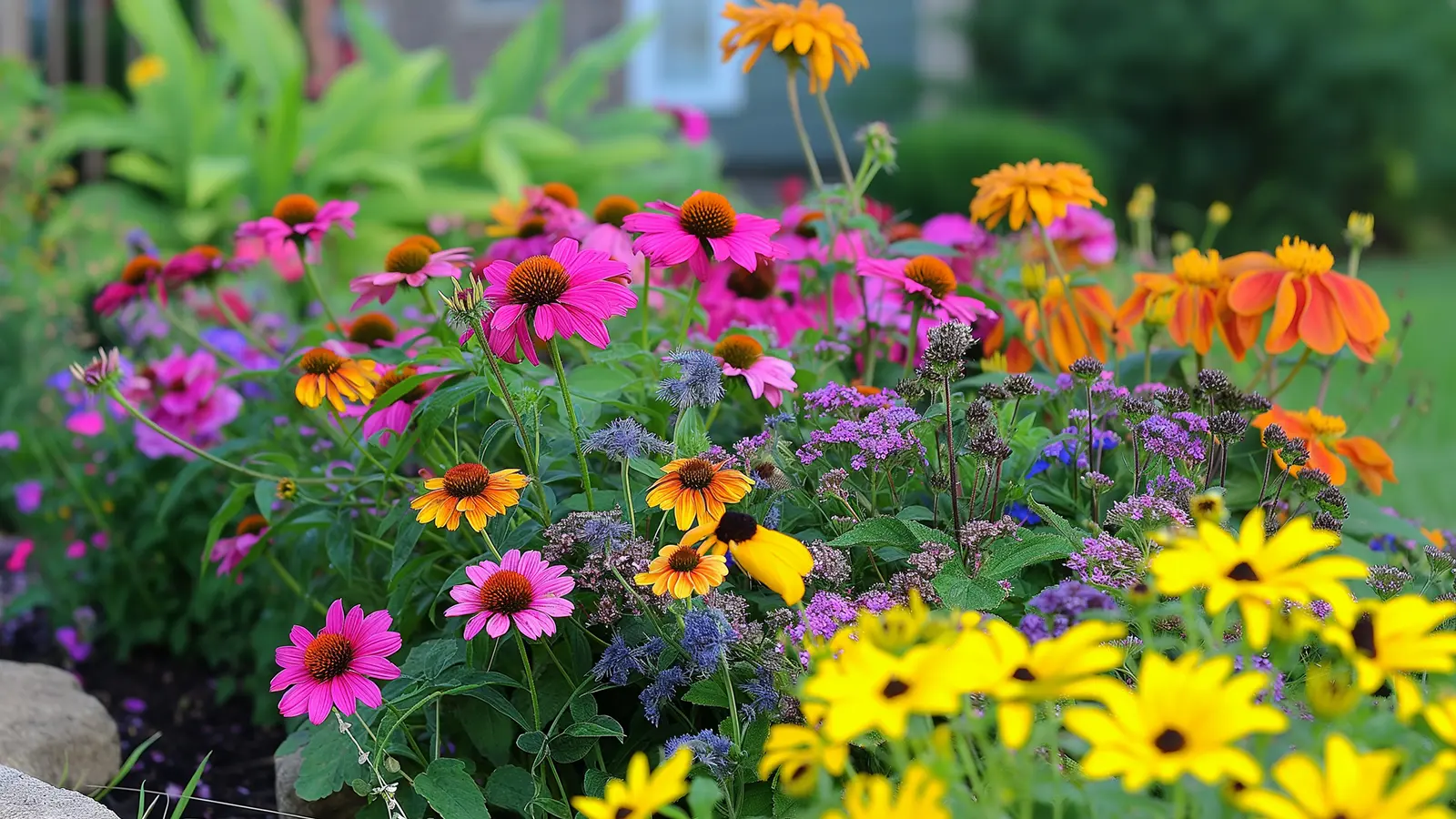
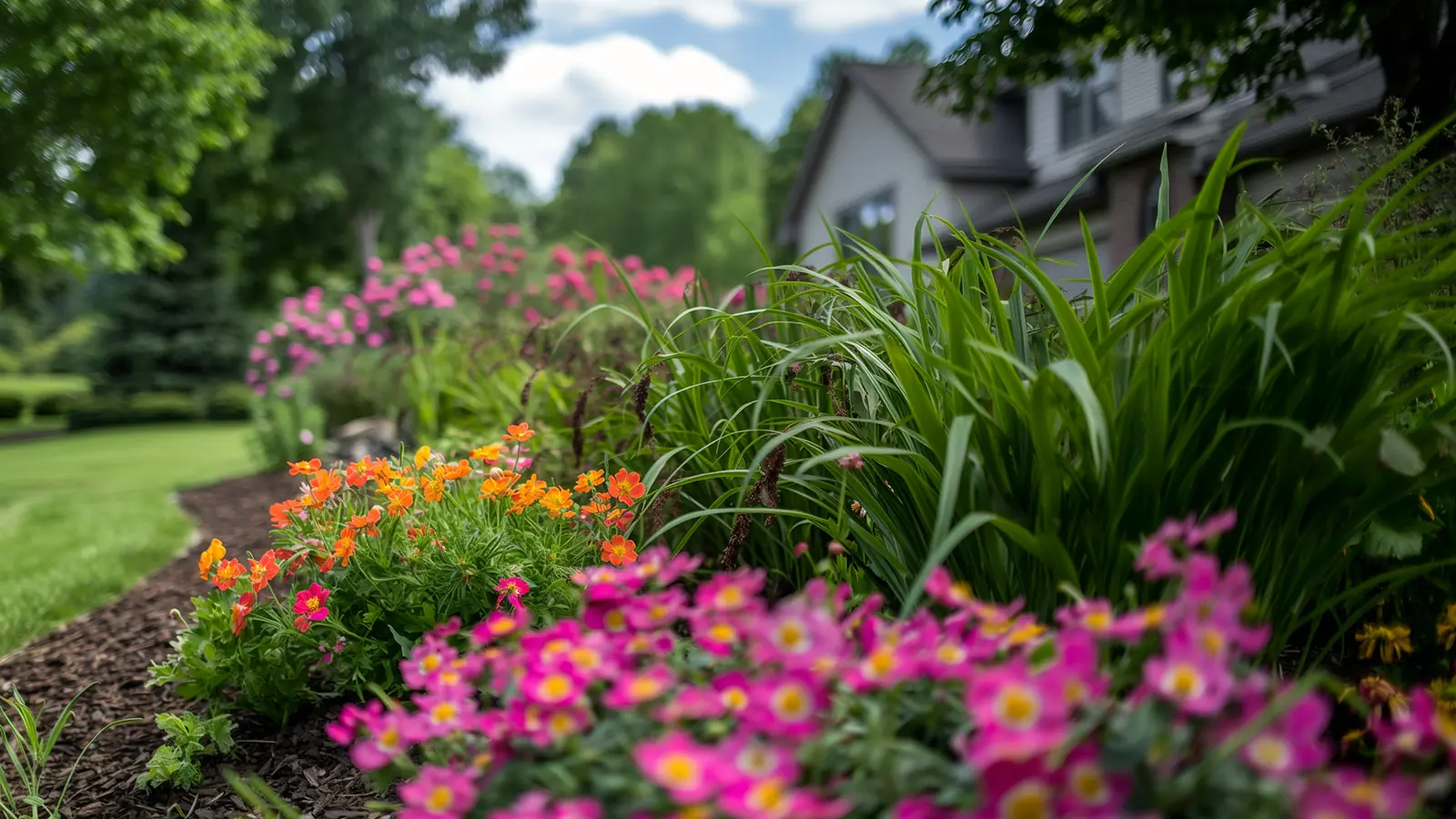
Plant Types Thriving in Ohio
Ohio’s various climates and seasons provide a unique opportunity for gardeners to cultivate multiple plant types, each suited to specific goals and ecological roles. From the fleeting brilliance of annuals to the enduring presence of perennials and the natural charm of native wildflowers, these plants form the foundation of dynamic gardens that change and grow throughout the year. Understanding each plant type’s distinct qualities and benefits can help Ohio gardeners create visually stunning and ecologically balanced gardens.
Annuals, perennials, and wildflowers each play crucial roles in the garden, contributing their special touches to aesthetics and biodiversity. While annuals dazzle with their rapid lifecycle and vibrant colors, perennials provide structure and continuity, and wildflowers support local wildlife and maintain ecological health. Together, these plant types offer a tapestry of blooms that enhance the garden’s beauty and promote a healthy, sustainable environment. As we explore each category, we’ll see how integrating these diverse plant types can lead to a flourishing garden that captivates and nurtures throughout the seasons.
Annuals
Annuals in Ohio are celebrated for their ability to transform gardens with bursts of color that last from spring until the first frosts of fall. These plants, completing their entire life cycle within a year – from seed to flower to seed – provide an unmatched vibrancy ideal for seasonal displays. Annuals like marigolds, petunias, and zinnias are perfect for filling gaps in flower beds, enhancing borders, or decorating containers with their exuberant flowering. They are treasured for their flexibility, allowing gardeners to redesign their floral arrangements yearly. Moreover, annuals can be used greatly in vegetable gardens, where they add beauty and help in pest control.
Perennials
Perennials, on the other hand, are the steadfast mainstays of the garden. These plants return year after year, growing more robust each season. In Ohio, perennials such as daylilies, hostas, and peonies offer recurring blooms and a sense of garden continuity and structure. They are particularly valued for their ability to adapt to the local climate over time, becoming more resilient and requiring less maintenance than many annuals. Perennials also play a crucial role in creating habitats for wildlife, offering shelter and sustenance across multiple seasons.
Wildflowers
Wildflowers are essential to Ohio’s natural heritage and the health of its garden ecosystems. Native species like Black-eyed Susan, wild columbine, and purple coneflower thrive with minimal intervention, perfectly adapted to Ohio’s climate and soil conditions. These wildflowers bring a natural aesthetic to gardens and support native wildlife, providing nectar, pollen, and seeds to various bees, butterflies, and birds. Their presence helps maintain biodiversity and encourages a balance of beneficial insects, aiding in natural pest control. Planting wildflowers is a beautiful way to contribute to environmental conservation while enjoying low-maintenance gardening.
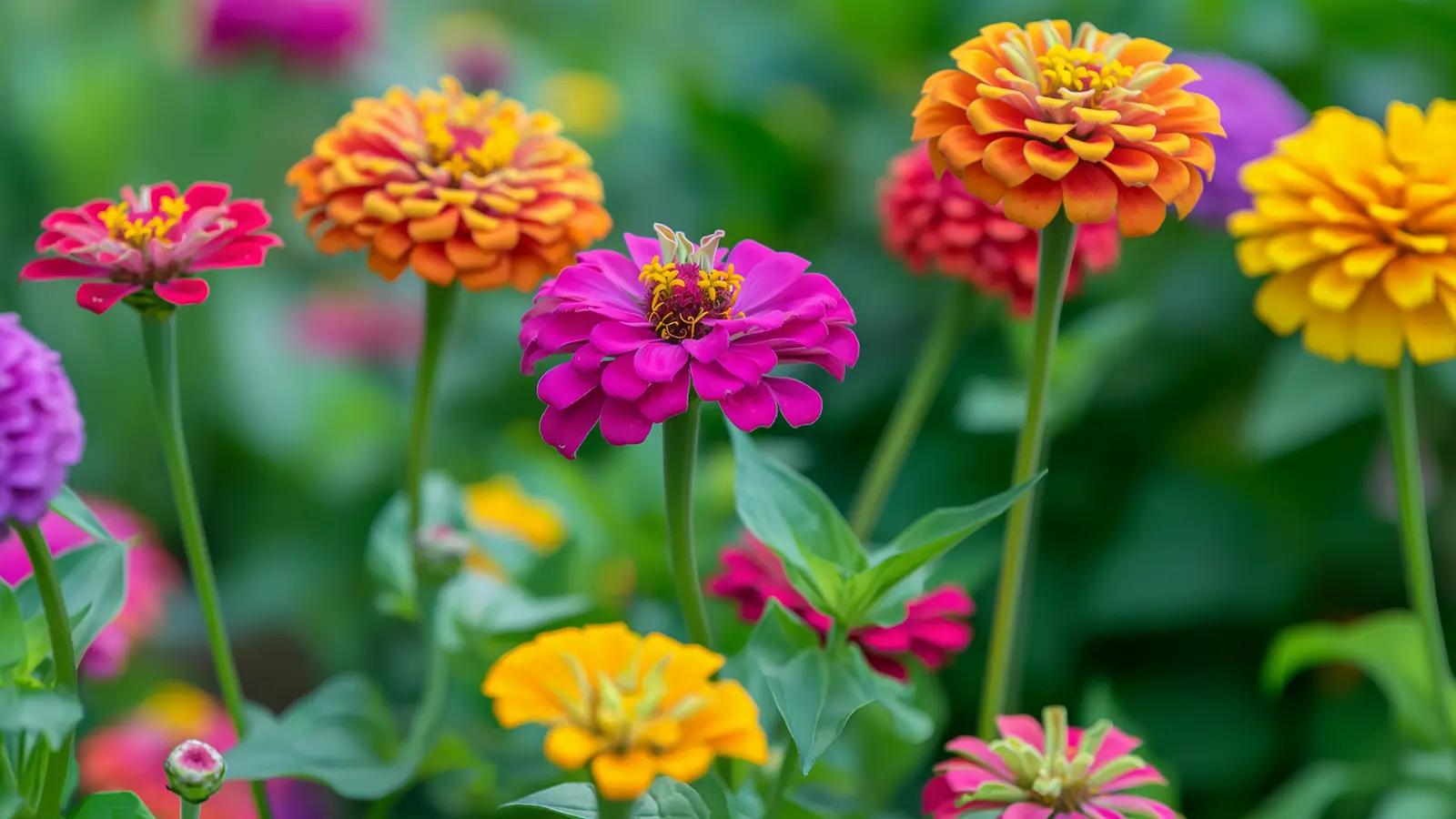
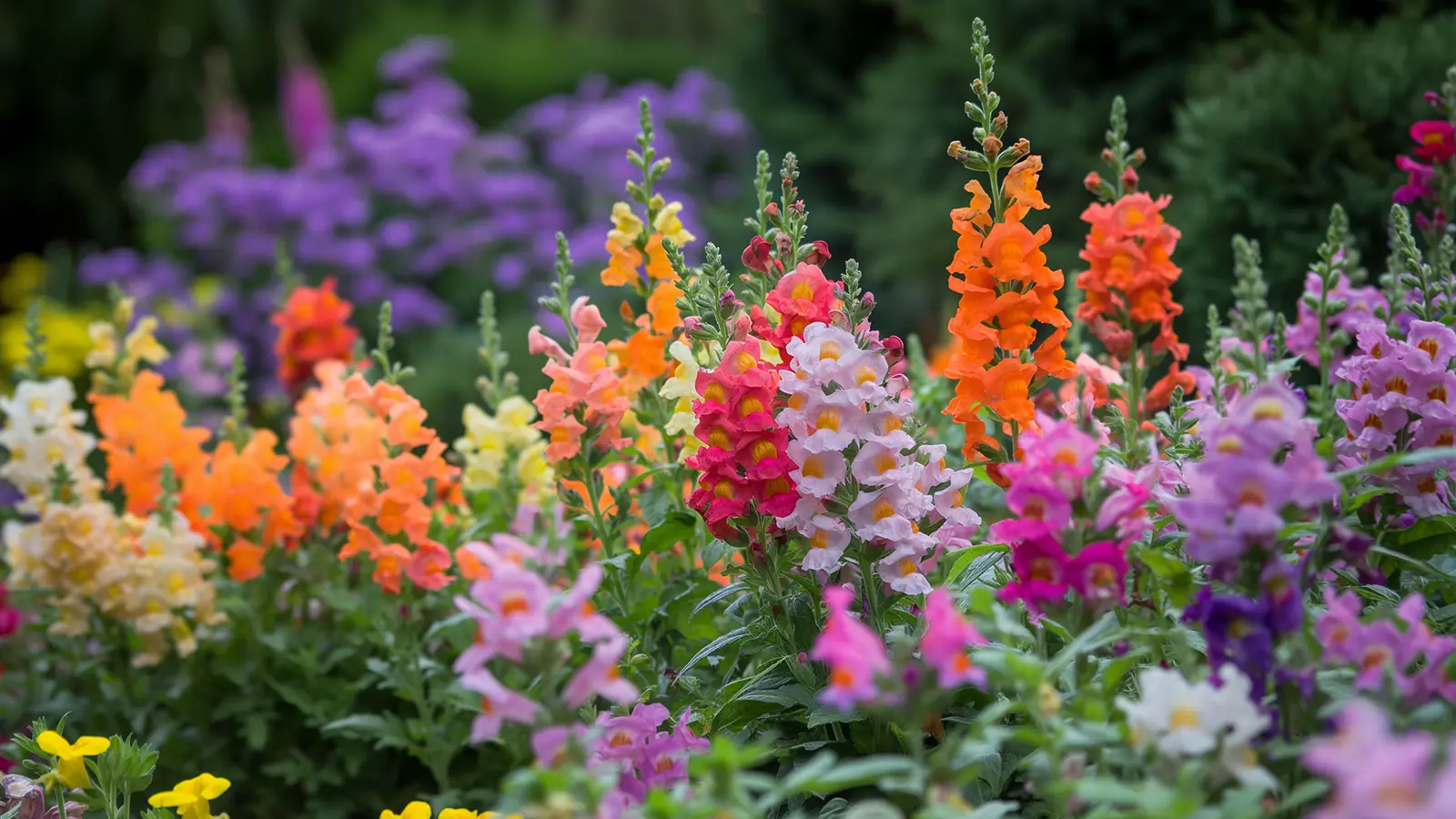
Growing Annuals in Ohio
In the vibrant tapestry of Ohio’s gardening scene, a collection of diverse and dynamic flowers captures the imagination of novice and seasoned horticulturists. Among these, Marigolds shine brightly with their robust, sun-loving nature, their golden blooms framing garden borders and enhancing vegetable patches by deterring pests and promoting robust plant growth. Meanwhile, Zinnias dazzles with a spectacular array of colors, from the deepest pinks to the brightest yellows, drawing butterflies and hummingbirds into their orbit. These plants bloom profusely from early summer to the chill of late fall and stand resilient against the summer heat, adding enduring vibrancy to Ohio gardens.
Further enriching the state’s floral diversity, Sunflowers tower with grandeur, their large, cheerful faces turning to follow the sun, becoming a central feature for attracting a host of beneficial pollinators and migratory birds. Cosmos, with their delicate, star-shaped blooms in shades from pale lavender to crisp white, thrive in Ohio’s varying soil conditions, offering beauty and resilience through their drought tolerance. These flowers, along with other garden favorites like the richly hued Petunias and elegant Snapdragons, collectively enhance the ecological tapestry of the region, attracting bees and other beneficial insects, thus supporting local biodiversity with every bloom.
Marigold (Tagetes)
Marigolds are a staple in Ohio gardens, celebrated for their robust, sun-loving nature and prolonged blooming from early summer until frost. Their vibrant yellow and orange flowers create stunning borders and act as excellent companion plants in vegetable gardens, deterring pests and enhancing growth. These flowers are particularly effective in attracting beneficial insects, adding ecological value to your garden. Easy to care for, marigolds thrive in well-drained soil and full sun, making them ideal for new and experienced Ohio gardeners alike.
Zinnia (Zinnia elegans)
Zinnias are renowned for their spectacular display of vibrant blooms in many colors, from deep pink to bright yellow, making them a popular choice for Ohio gardens. Thriving in well-drained soil and full sun, they are easy to grow from seed and bloom profusely from early summer to late fall. Zinnias attract butterflies and hummingbirds, making them a visual asset and beneficial for pollination. Their showy blooms and ability to withstand the summer heat make them perfect for adding long-lasting color to perennial borders and floral arrangements.
Sunflower (Helianthus annuus)
Sunflowers are iconic for their tall stems and large, cheerful faces, which turn to follow the sun. These giants are incredibly easy to cultivate in Ohio’s sun and are beloved for attracting birds and other beneficial pollinators. Sunflowers bloom from mid-summer into early fall, providing bold and bright yellow centers that enliven any garden space. They attract migratory birds, offer seeds as a food source, and create a lively garden atmosphere.
Cosmos (Cosmos bipinnatus)
Cosmos are distinguished by their dainty, star-shaped flowers and feathery foliage. They flourish in Ohio’s diverse soil types. These drought-tolerant plants thrive in poor soil conditions and bloom from early summer into late fall. The vibrant flowers bloom in shades including pale lavender and bright white, attracting bees and butterflies to the garden. Cosmos are perfect for filling gaps in the garden, offering a continual display of color and life.
Petunia (Petunia x hybrida)
Petunias are prolific bloomers, presenting a rich palette of colors from deep roots to vibrant tops. They flourish in well-drained soil and full sun, making them an excellent choice for Ohio gardeners looking to enhance hanging baskets and window boxes. Their continuous blooming throughout the summer attracts hummingbirds and beneficial insects, adding beauty and ecological benefits to the garden. Petunias require regular watering and thrive in the warmth of Ohio’s summer.
Snapdragon (Antirrhinum majus)
Snapdragons are cherished for their ruffled blooms and tall, thin spikes, which make a dramatic statement in any garden. Thriving in Ohio’s cooler summer and early fall weather, they are ideal for adding height and color to floral displays. Snapdragons attract butterflies with their tubular flowers, which come in various colors, from soft pastels to vibrant reds. They prefer moist soil and partial shade, where they can grow up to two feet tall.
Impatiens (Impatiens walleriana)
Impatiens are a superb choice for shaded garden areas in Ohio, thriving in moist soils and partial shade. Known for their vibrant and upturned pink flowers, these plants bloom continuously throughout the summer and into the fall, providing a consistent splash of color. Impatiens attract beneficial insects and are perfect for planting under taller plants or in window boxes where other flowers might not thrive. Their easy care and shade tolerance make them a favorite among Ohio gardeners.
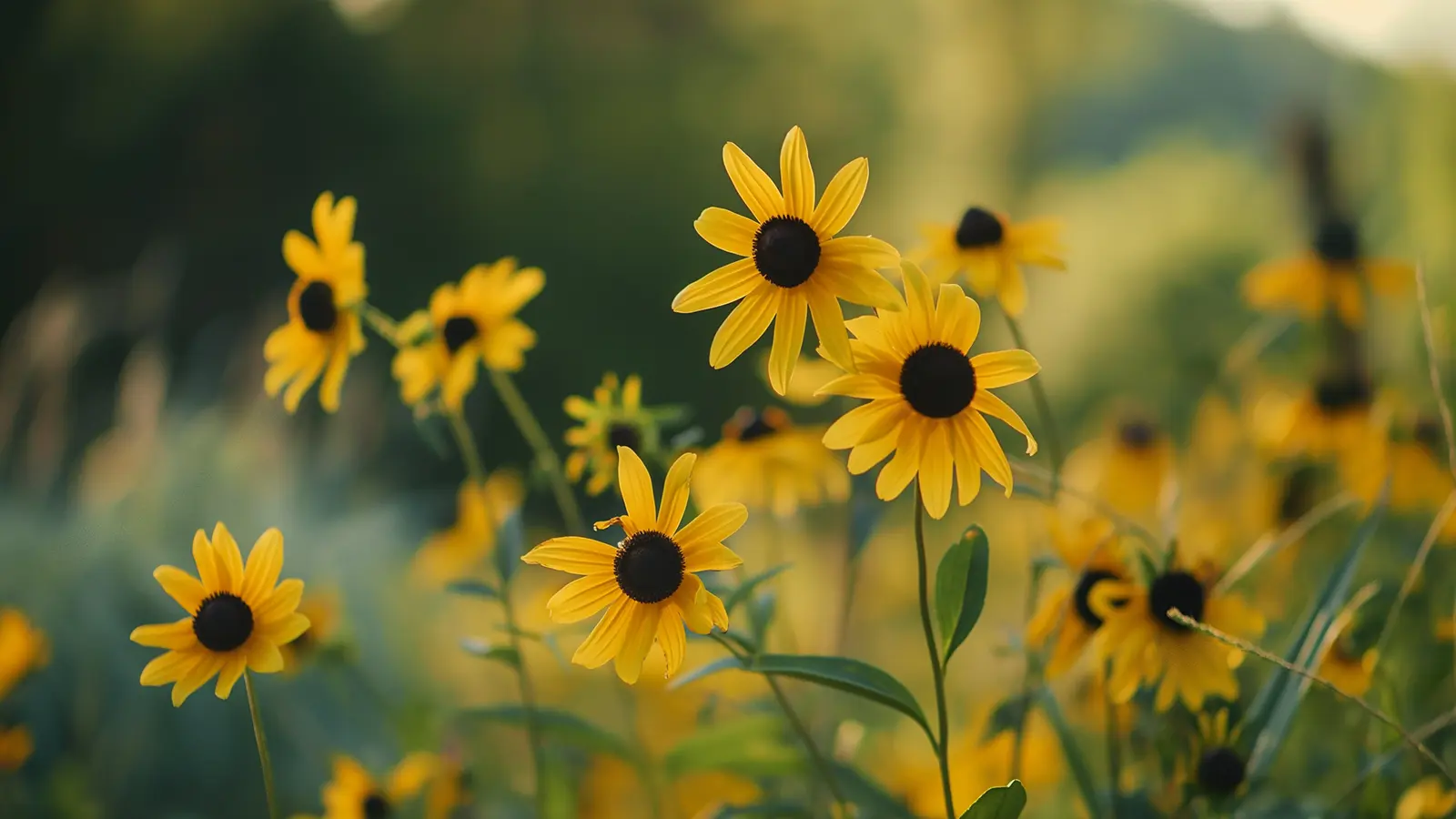
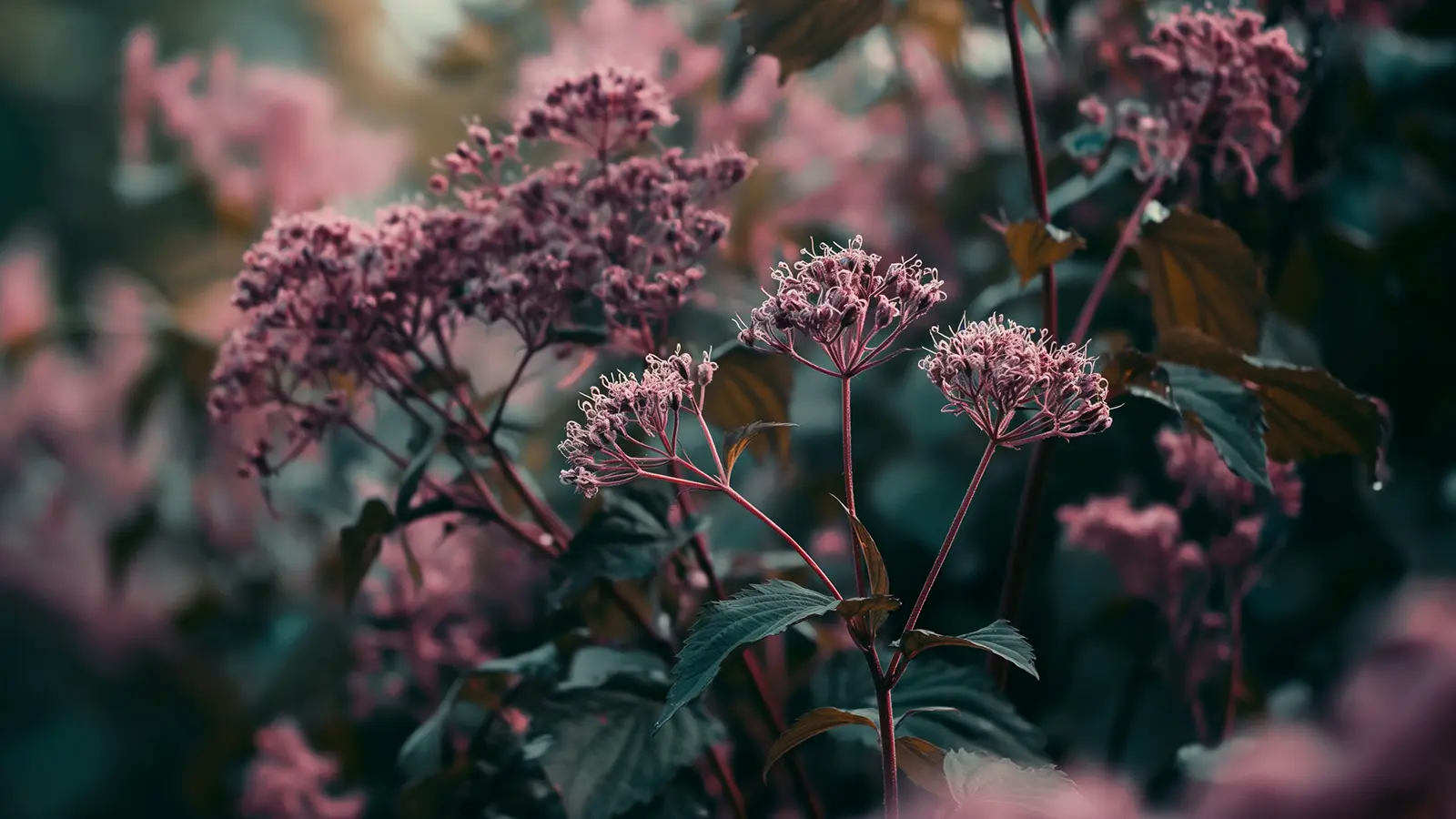
Growing Wildflowers in Ohio
In the lush landscapes of Ohio, our gardens teem with native flora, each species showcasing its unique charm and resilience while enriching our ecosystems. The vivid, daisy-like flowers of the Black-eyed Susan radiate through the garden, their golden hues attracting butterflies and birds that animate our outdoor spaces. Nearby, the Wild Columbine displays striking red and yellow blooms that dance in the breeze, creating a magnet for hummingbirds and butterflies drawn to their nectar-rich blossoms. These vibrant displays add aesthetic beauty and play vital roles in local biodiversity, fostering a dynamic environment where wildlife thrives.
Adjacent are the bold Purple Coneflower and statuesque Joe Pye Weed, which stand proudly among other garden plants. The Coneflower’s large violet flowers and the pale lavender blooms of nearby species like the delicate Wild Geranium create a palette of color that lasts throughout the growing season. With its tall stems and pinkish-purple tassels, Joe Pye Weed, towering over the garden, attracts bees and other beneficial insects essential for pollination. Together, these native plants form a thriving community that supports and sustains both butterflies and hummingbirds, ensuring that our gardens are not only places of beauty but also crucial habitats for supporting local wildlife.
Black-eyed Susan (Rudbeckia hirta)
Black-eyed Susan is a quintessential part of Ohio gardens, celebrated for its golden, daisy-like flowers with dark centers that bloom from mid-summer to early fall. This native wildflower is drought-tolerant and ideal for Ohio’s varied climates. It is also excellent for attracting butterflies and birds and enhancing biodiversity. Thriving in full sun and well-drained soil, Black-eyed Susan adds a splash of bright yellow to perennial borders and naturalized areas. As a native species, it supports local ecosystems and is a staple in wildlife-friendly gardens.
Wild Columbine (Aquilegia canadensis)
Wild Columbine is a charming native perennial known for its unique, nodding red and yellow flowers that appear in early spring. Perfect for shady spots in Ohio gardens, this plant grows well in partial shade and attracts hummingbirds and butterflies with its nectar-rich blooms. The deep green foliage contrasts beautifully with the vibrant flowers, making it a delightful addition to woodland gardens. As a native plant, it requires minimal maintenance and supports local pollinators and other beneficial insects.
Purple Coneflower (Echinacea purpurea)
Purple Coneflower is a beloved native perennial in Ohio. It showcases large, purple-pink blooms with prominent central cones throughout the summer. This hardy plant attracts butterflies and is an important food source for native birds, including migratory species. Thriving in full sun and well-drained soil, it is a staple in pollinator gardens and perennial borders for its showy blooms and ability to withstand summer heat. Its medicinal properties also make it a valuable plant for natural health enthusiasts.
Joe Pye Weed (Eutrochium purpureum)
Joe Pye Weed is a robust native perennial featuring tall stems topped with mauve-pink flower clusters that bloom in late summer. This plant thrives in moist, well-drained soil and is ideal for attracting butterflies and other pollinators to Ohio gardens. Its impressive height, often six feet, makes it a striking background plant in perennial borders or naturalized wet meadows. Despite its common name, Joe Pye Weed is a valuable addition for its ornamental and wildlife-supporting qualities.
New England Aster (Symphyotrichum novae-angliae)
This native perennial is a vibrant late-bloomer, offering purple flowers with yellow centers that attract diverse pollinators. Blooming from late summer to early fall adds a burst of color when many other plants are fading. It thrives in full sun and well-drained soil, making it a hardy choice for Ohio gardeners. Its ability to attract beneficial insects and withstand autumn winds makes it indispensable in wildlife and naturalized gardens.
Goldenrod (Solidago spp.)
Often misunderstood, Goldenrod is an essential native plant for Ohio gardens, boasting bright yellow, spiky flowers that bloom in late summer. It thrives in well-drained soil and full sun, attracting various beneficial pollinators and serving as a critical nectar source in the late season. Goldenrod’s resilience and showy blooms make it perfect for naturalistic and perennial borders, where it provides support for native bees and other pollinators without the worry of aggravating allergies, contrary to common belief.
Ironweed (Vernonia noveboracensis)
Ironweed is a striking native perennial with tall, robust stems and deep purple flowers that bloom in late summer. This plant prefers moist, well-drained soil and full sun, flourishing in Ohio’s wet meadows or along stream banks. Its nectar-rich blooms attract butterflies and other beneficial pollinators, making it a valuable addition to any pollinator-friendly garden. Ironweed’s vibrant color and tall stature make it a focal point in any garden setting, contributing to its popularity among Ohio gardeners.
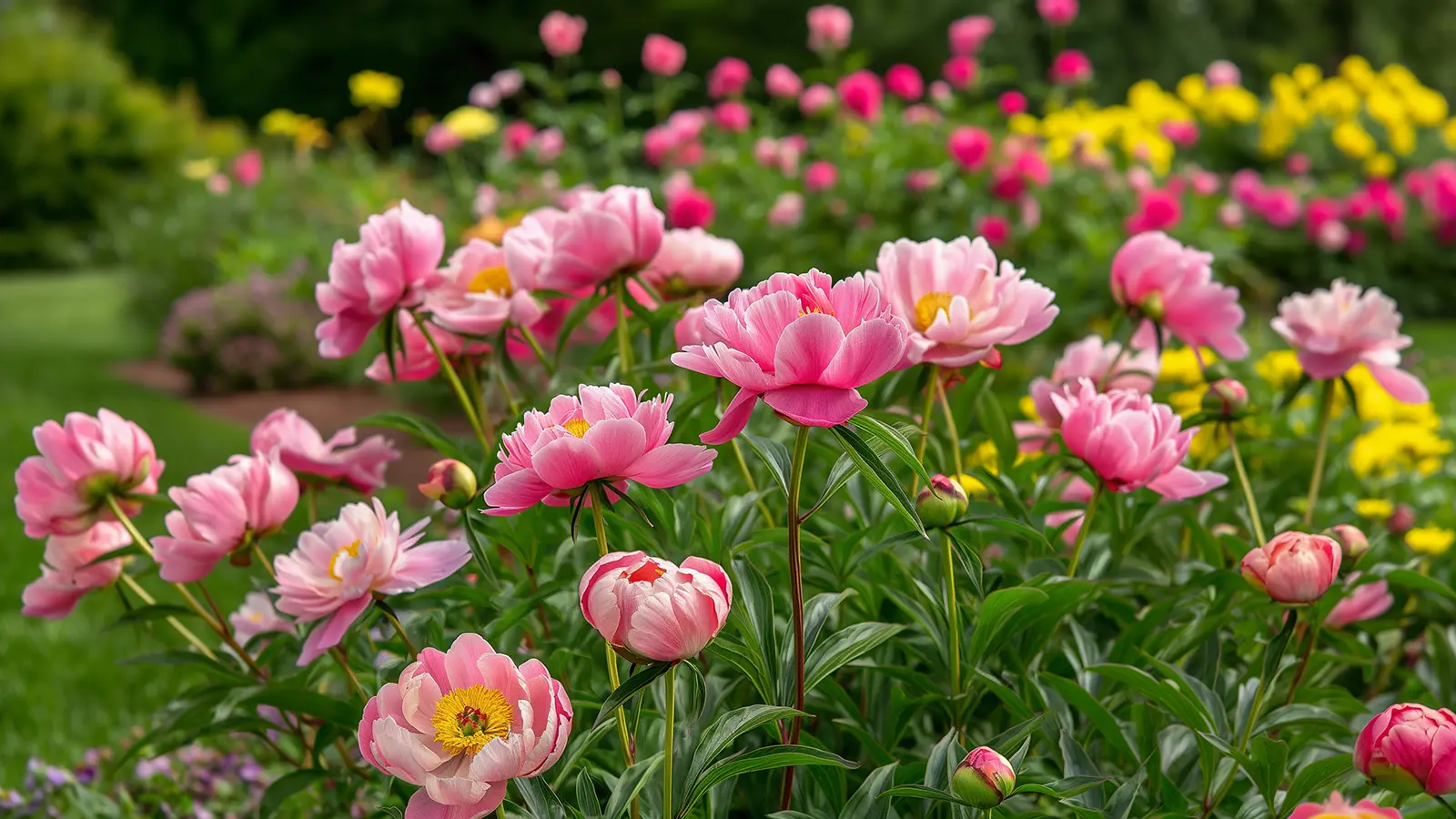
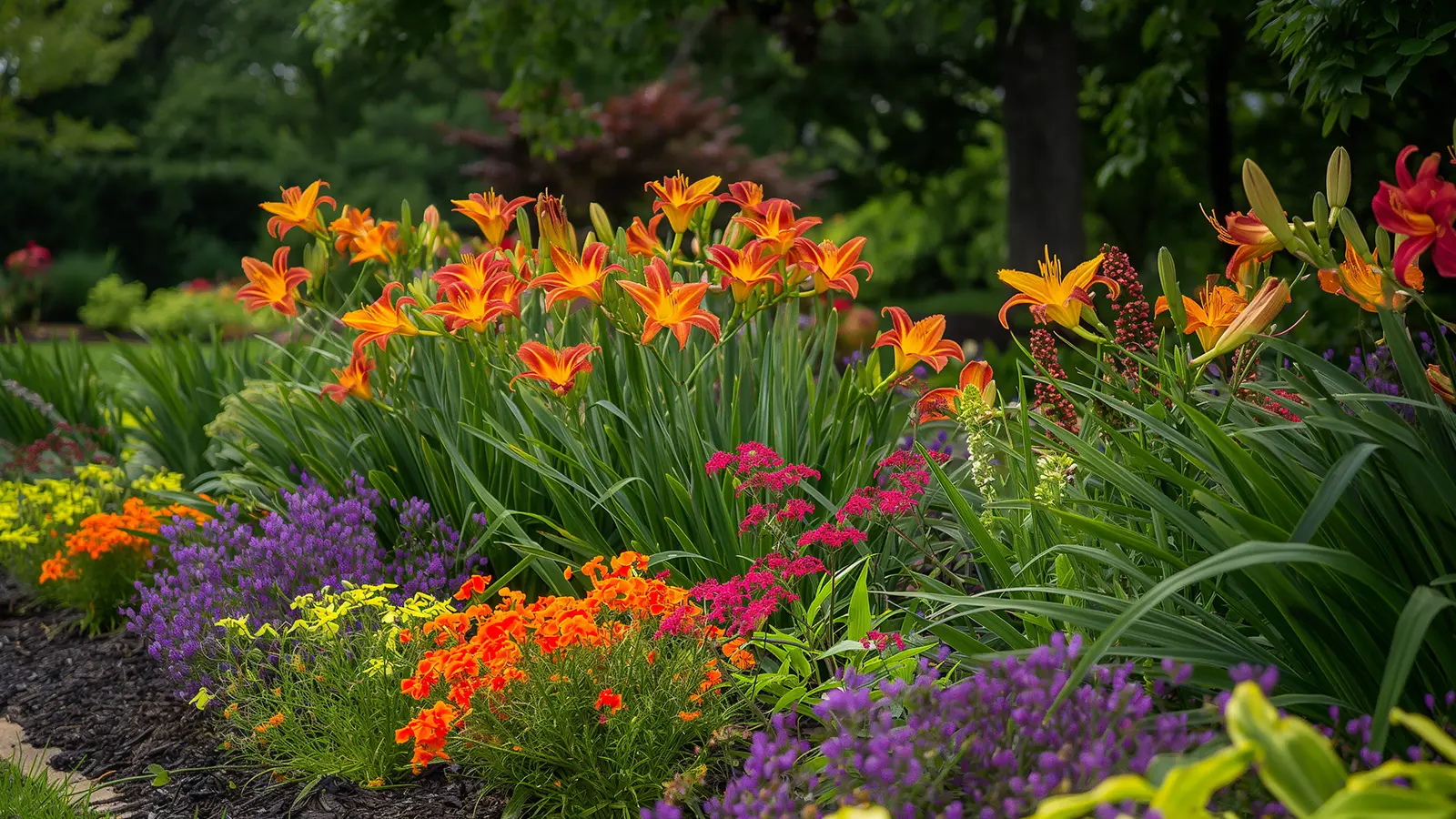
Growing Perennials in Ohio
A selection of perennials enhances the aesthetic appeal and ecological balance in Ohio’s rich and diverse landscapes. The vibrant Daylilies, with their spectrum from sunlit yellows to fiery reds, and the tranquil Hostas, with deep green foliage and pale lavender flowers, exemplify the robust spirit of Ohio native perennials. Coral Bells add delicate, bell-shaped blooms to the mix, enriching the garden’s color palette and ensuring a continuous display throughout the seasons. These plants beautify and support local wildlife by attracting bees and other beneficial pollinators.
The lush Peonies, with blooms ranging from snowy white to deep pink, and the classic white flowers of Shasta Daisies contribute depth and texture to garden compositions. As integral parts of Ohio’s ecosystem, these native plants serve both ornamental and ecological roles, transforming Ohio gardens into vibrant sanctuaries of biodiversity. These gardens offer a captivating display each season, embodying Ohio’s natural heritage and providing sanctuaries that buzz with life and color.
Daylily (Hemerocallis spp.)
Daylilies are exceptionally hardy and adaptable, making them a favorite among Ohio gardeners for their colorful blooms, which range from vibrant yellows to deep reds. These perennials thrive in well-drained soil and can tolerate full sun and partial shade, blooming profusely from early summer to early fall. Known for their resilience and low maintenance, Daylilies are suitable for various garden settings, including borders and flower beds. Their ability to adapt to various soil types and conditions makes them ideal for Ohio landscapes.
Hosta (Hosta spp.)
Hostas are indispensable for shady Ohio gardens, offering lush, deep green foliage and spikes of white or pale lavender flowers that bloom in mid-summer. These perennials are celebrated for their ability to thrive in partial to full shade and their attractiveness to hummingbirds. Hostas are perfect for underplanting beneath taller shrubs or trees and excel in perennial borders due to their varied leaf textures and colors. Additionally, their flowers provide a subtle charm that enhances visual appeal while attracting beneficial pollinators.
Peony (Paeonia lactiflora)
Peonies are renowned for their large, showy blooms, which make a dramatic statement in any Ohio garden. They flower from late spring to early summer. These perennials prefer well-drained soil and flourish in full to partial sun, showcasing colors that range from pure white to deep pink and vibrant red. Once established, peonies are drought tolerant, making them suitable for Ohio’s variable climate. Their lush foliage provides a strong backdrop for newer blooms and adds interest even after the flowers have faded.
Coral Bells (Heuchera)
Coral Bells is a versatile garden plant known for their colorful foliage in shades ranging from silver to deep burgundy and delicate bell-shaped flowers that attract butterflies. They thrive in moist, well-drained soil and are ideal for partial shade, making them perfect for adding color to shaded garden areas or woodland settings. The small, tubular flowers bloom in early summer and are a favorite among hummingbirds. Coral Bells’ compact size and mounding habit make them excellent for borders, container gardens, and ground cover.
Astilbe (Astilbe x arendsii)
Astilbe is a favorite for shady Ohio gardens, where its feathery, plume-like flowers make a soft statement in various colors, from white to pink to deep red. Thriving in moist soil, these perennials are perfect alongside water features or garden spots that don’t drain well. Astilbe blooms mid to late summer, providing color when many other shade plants have finished flowering. They are also appreciated for their ability to attract butterflies, adding a lively element to the garden.
Shasta Daisy (Leucanthemum x superbum)
Shasta Daisies are beloved for their classic beauty, featuring bright white petals and sunny yellow centers. These perennials thrive in full sun and adapt well to various soil conditions, making them a robust choice for Ohio gardeners. Blooming from early summer to early fall, they offer a long season of interest and are excellent for cut flower arrangements. Shasta Daisies attract butterflies and beneficial insects, making them a functional addition to any pollinator garden.
Lavender (Lavandula angustifolia)
Lavender is prized for its fragrant foliage and spikes of lovely lavender flowers that bloom in early to mid-summer. This drought-tolerant perennial thrives in well-drained soil and full sun, making it ideal for Ohio’s hot summers. Lavender’s aromatic qualities make it a popular choice for herb gardens and border plantings, and its flowers attract bees and butterflies. The plant’s ability to withstand dry conditions and poor soil makes it a low-maintenance option for gardeners seeking beauty and resilience.
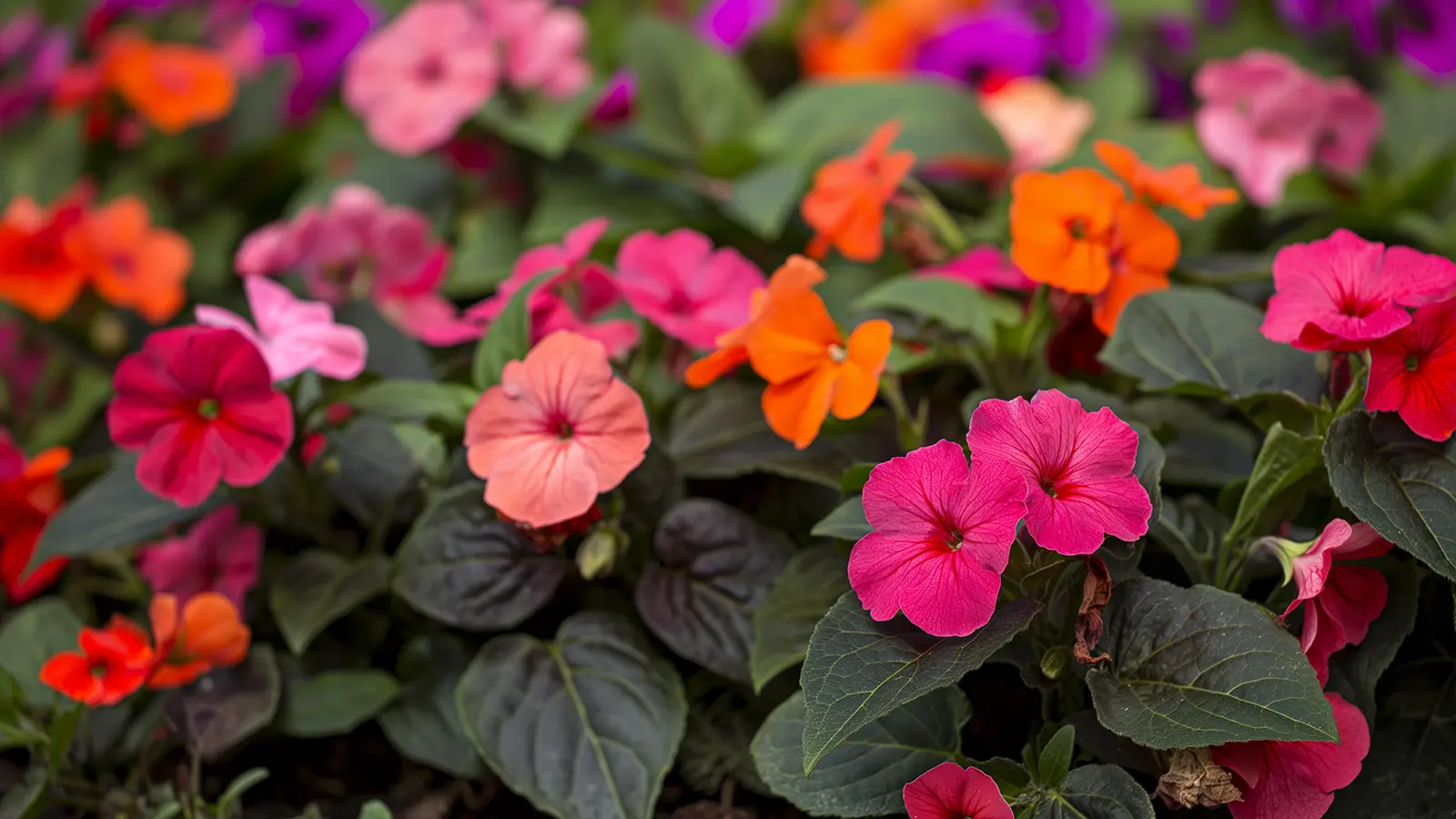
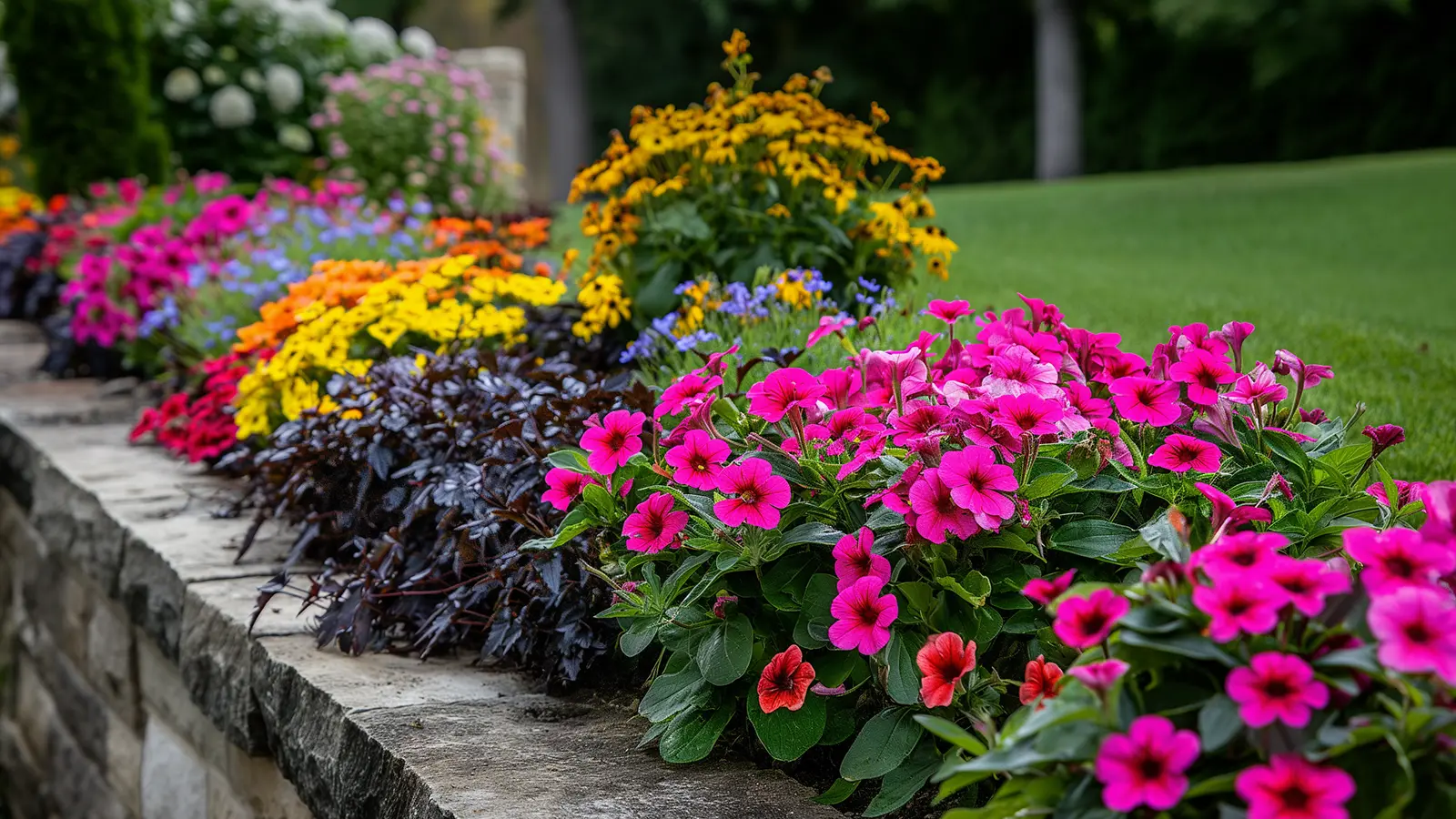
Cultivating Beauty and Biodiversity in Ohio’s Gardens
Ohio’s diverse climate and fertile landscapes offer gardeners a remarkable variety of plant choices that can dramatically enhance any garden setting, whether seasoned or just beginning. By selecting plants well-suited to the specific hardiness zone, particularly Zone 6, gardeners can ensure that their garden survives and thrives throughout the changing seasons. This careful selection helps to create a vibrant garden that is both a visual delight and a haven for local wildlife, contributing positively to the local ecosystem.
Furthermore, tailoring your plant choices to match your garden’s specific conditions – considering factors such as soil type, sunlight availability, and moisture level – can lead to a lush and flourishing garden that offers a tranquil retreat right in your backyard. Such a garden serves as a personal sanctuary that beautifies the neighborhood and supports biodiversity, attracting pollinators like bees and butterflies and providing bird shelter. Ohio gardeners have the unique opportunity to blend aesthetic goals with ecological benefits, resulting in a garden that is as rewarding to cultivate as it is to behold.













